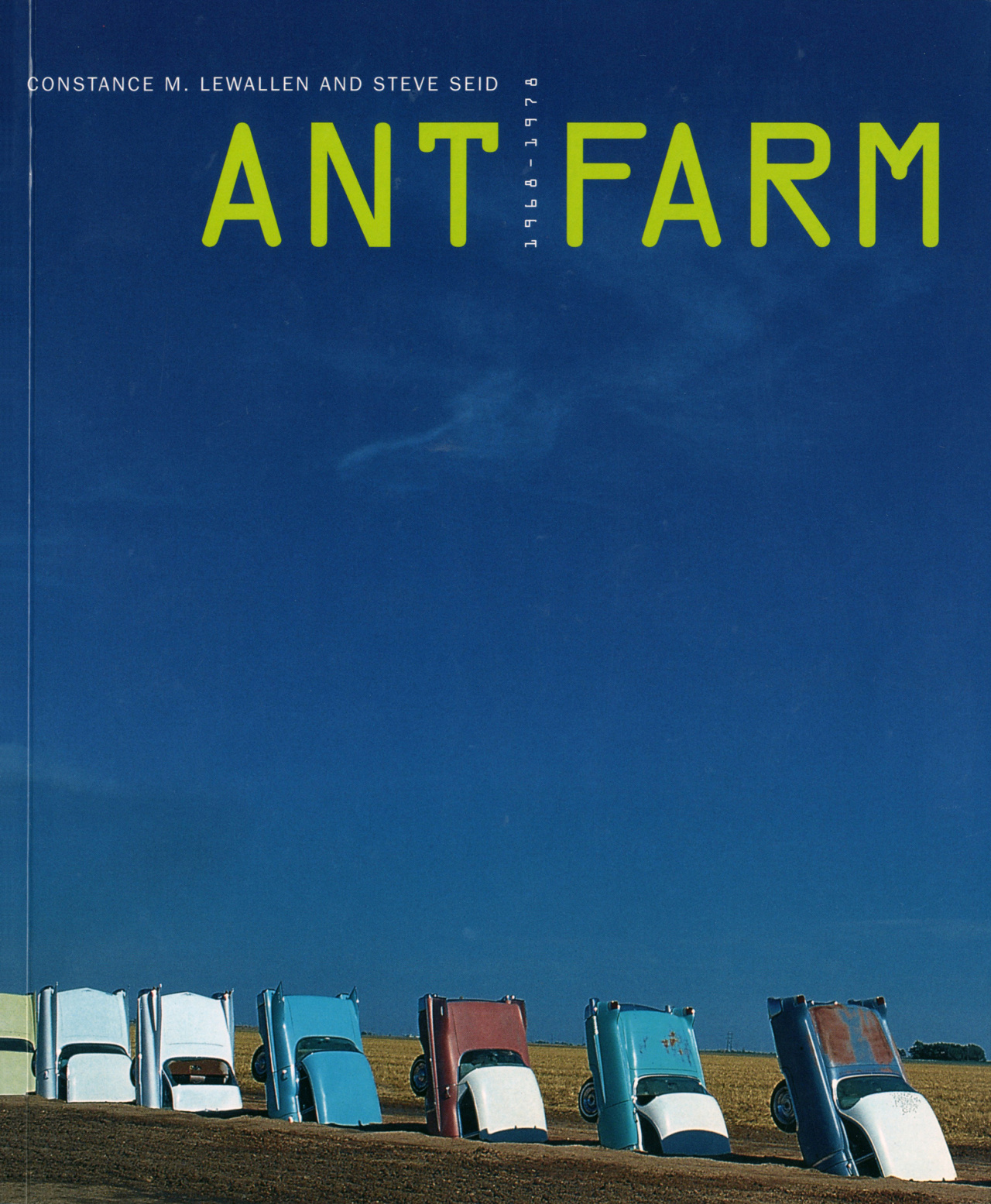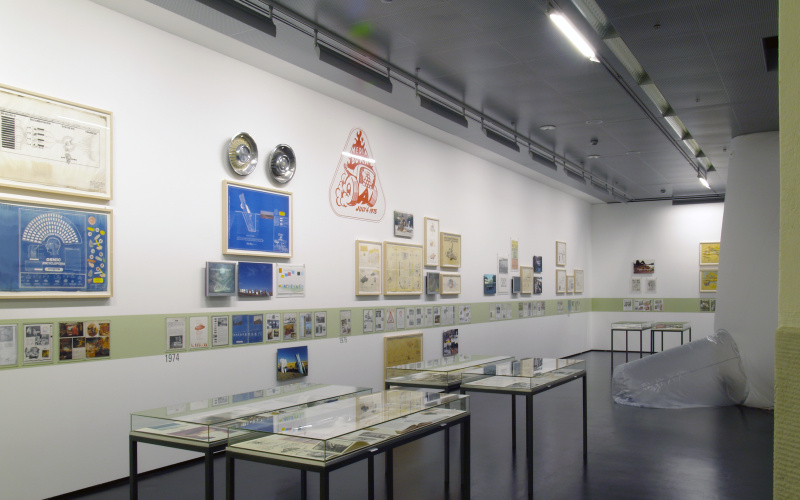Skip to main content
- Type of publication
- Exhibition catalog
- Physical Description
- 194 S. : ill.
- Language
- English
- Year
- 2004
- ISBN
- 0-520-24029-4 (cloth : alk. paper) ; 0-520-24030-8 (pbk. : akl. paper)
- Content
- “Through published projects, museum exhibitions, built works, and video, Ant Farm has continued to question the limits of architectural practice, its purpose, and its consequences. Blurring the line between art, architecture, and environmental activism, the Ant Farmers have consistently shown us new ways of analyzing, engaging, and understanding our world – even if we're left wondering about our future.”
– David A. Ross
“Ant Farm was a gorgeous god-knows-what: a collective project that straddled architecture and performance art and pioneered video art, that embraced some of the most radical ideas of the 1960s while remaining fond of iconic mainstream America, that was from the Bay Area and the East Coast and Texas, and that was generally as funny as it was smart. Now at last it's adequately documented for the benefit of future generations who should most definitely know about »Media Burn« and inflatable environments and the ideas behind »Cadillac Ranch« and »Where They Are Now«. Buy this book today. No home is complete without."
– Rebecca Solnit
Ant Farm 1968 - 1978
Edited by Constance M. Lewallen and Steve Seid
With additional essays by Chip Lord, Caroline Maniaque, and Michael Sorkin, and a timeline by Ant Farm
This richly illustrated book provides a fascinating critical overview of Ant Farm, the radical architecture collective that brought us »Cadillac Ranch«, »Media Burn«, and »The Eternal Frame«. Established by several young renegade architects in 1968, Ant Farm was eager to bring to its practice a revolutionary spirit more consistent with the times. Its vision encompassed creations for a nomadic lifestyle, including inflatable structures and radical environments that culminated in projects such as the organically appointed »House of the Century« and the unrealized aquatic edifice »The Dolphin Embassy«.
»Ant Farm 1968-1978« explores the sweeping career of this inspired and inspiring visionary collective as its architectural projects broadened to embrace a range of undertakings that challenged the visual architecture of image, icon, and power. Constance Lewallen provides an in-depth, anecdotally rich interview with Ant Farm members Chip Lord, Doug Michels, and Curtis Schreier. An essay by Michael Sorkin gives the multivalent cultural context for Ant Farm’s radical architecture, weaving rock music, French Surrealism, American car culture, and sexual liberation into the mix. Steve Seid takes a comprehensive look at Ant Farm's influential videotapes, identifying a cohesive and whimsical body of work that still resonates with relevance. Caroline Maniaque's “Searching for Energy” details the group's inflatable structures in relationship to contemporaneous architects working in a similar vein. The catalog also includes a substantial excerpt from Chip Lord's 1976 meditation on car culture, with a new epilogue; a graphically playful timeline recounting Ant Farm's essential art projects designed by Lord, Michels, and Schreier; and a rich montage of images and ephemera capturing the humor, originality, and science of this feisty enterprise called Ant Farm.

